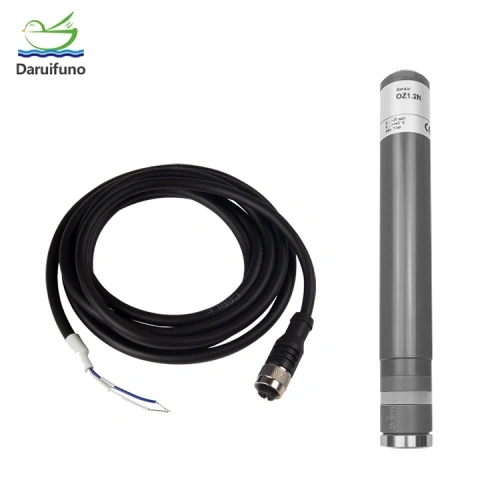According to Lane Martin, an assistant professor of materials science and engineering at the University of Illinois in the U.S., when it comes to designing next-generation solar energy conversion systems, the first step is to develop a solution that can more effectively harness solar energy. He emphasized that this approach represents a completely new way of thinking about materials.
Martin explained, "This is a fundamentally different method of working with materials. Through these innovations, we can envision a future where clean fuels are produced without carbon emissions, while also enabling wastewater purification and environmental remediation."
Titanium dioxide, along with other metal oxides, has shown great potential in enhancing visible light absorption, which is crucial for maximizing the efficiency of solar energy systems. By integrating condensed physics, semiconductor device engineering, and photochemistry, Martin’s team developed a high-performance solar photocatalyst that combines two key materials—titanium dioxide and SrRuO3.
According to Martin, one of the main challenges in oxide-based photovoltaic or photocatalytic systems is the limited ability of wide bandgap materials to absorb visible light. Among the candidates, anatase titanium dioxide stands out due to its chemical stability, affordability, and non-toxic nature, making it a widely studied material in the field of photocatalysis.
However, as a primary component in dye-sensitized solar cells, the presence of light-absorbing dyes often leads to insufficient visible light absorption by the wide bandgap material.
Sungki Lee, one of the authors of the study, noted, "Our observations suggest that the unique electronic structure of SrRuO3 contributes to its suboptimal optical properties. However, when combined with titanium dioxide, we can significantly enhance both the visible light absorption and the photocatalytic activity."
As shown in the figure, SrRuO3 absorbs 75 times more visible light than TiO2. The compatibility between TiO2 and SrRuO3 allows for the formation of heterojunctions that boost photocatalytic and photovoltaic performance through carrier injection.
Lee added, "SrRuO3 is an electronic oxide that exhibits metallic characteristics, such as temperature-dependent conductivity and ferromagnetic behavior. It can serve as a conductive electrode in metal oxide heterostructures."
By using light-induced carrier injection, the researchers created a novel heterostructure combining SrRuO3 and TiO2. This structure exhibits unique optical properties and improved photoelectrochemical performance, offering a promising pathway to enhance photocatalytic activity and expand the applications of other metal oxides.
The research could lead to breakthroughs in developing visible-light-sensitive materials and has already resulted in a U.S. provisional patent application. The work was primarily supported by the International Institute for Carbon Neutral Energy Research (I2CNER), the University of Kyushu in Japan, and the University of Illinois.
Professor Petros Sofronis from the Department of Mechanical Science and Engineering at the University of Illinois remarked, "The I2CNER project brings together some of the top energy researchers globally."
He continued, "The success of the Martin Research Group highlights that I2CNER is not just an international collaboration—it reflects a global commitment to green innovation, reducing CO2 emissions, advancing basic science, and developing sustainable energy technologies."

Description
Daruifuno's OZ10 ozone sensor (i.e. ozone probe) is an analytical instrument used to measure the ozone content in water or wastewater. This ozone sensor adopts the thin film covering ampere principle and is suitable for various water treatment occasions including water, wastewater, seawater and other water qualities. The sensor has anti-surfactant properties. The ozone sensor has a built-in temperature sensor, which can realize automatic temperature compensation, fast response time and good stability. Equipped with an ozone controller, it can realize display, control, history recording, output and other functions.

Ozone O3 is a molecule composed of three oxygen atoms and is a strong oxidizing agent. It is produced in nature by means such as ultraviolet radiation and electric shock discharge, and is commonly found in the ozone layer in the atmosphere. The advantage of ozone as a disinfectant is that it can quickly kill bacteria, viruses and other microorganisms, and is more efficient than traditional disinfectants. During the disinfection process, no harmful residue is left, and it will not cause pollution and harm to the environment and human health. Ozone has a killing effect on a variety of bacteria, viruses and fungi, and can effectively eliminate various pathogens. The bactericidal mechanism of ozone water is different from traditional disinfectants, and it is not easy to cause microbial resistance. Therefore, ozone is used as a disinfectant in some medical, food processing and other occasions. It is very necessary to monitor the ozone content in the water.
As a supplier and manufacturer of ozone sensors, Daruifuno is a trusted partner in water quality analysis. We are committed to excellence and innovation, providing cutting-edge solutions that meet the ever-changing needs of our customers. Our ozone sensors reflect our obsession with precision and reliability, providing powerful performance in a variety of water quality monitoring scenarios.
If you are looking for chlorine sensors with reliable quality, diverse functions and favorable price, Daruifuno's ozone sensors are your best choice. Our products are designed to provide precise and reliable results, allowing you to make informed decisions about water quality management. Contact us today to learn more about our products and find out how we can support you in achieving precise and reliable water quality monitoring.
Ozone Sensor,Ozone Probe
Suzhou Delfino Environmental Technology Co., Ltd. , https://www.daruifuno.com